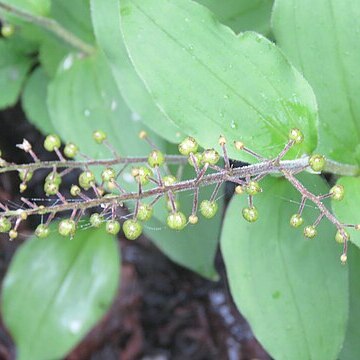A herb which keeps growing from year to year. It is about 60 cm high. The rootstock is stout and creeping. The rhizomes or underground stems and undivided. They are 1-1.5 cm thick. The leaves do not have leaf stalks. They are 5-12 cm long. The leaves are broadly oval and taper to the tip. They have hairs along the edge. They are hairy underneath. The flowers are deep brown. Sometimes they are white tinged with purple. They occur as many flowers along stalks at the ends of branches. The fruit is a berry. It is red at maturity and 6-7 mm across. There are 1-4 seeds.

